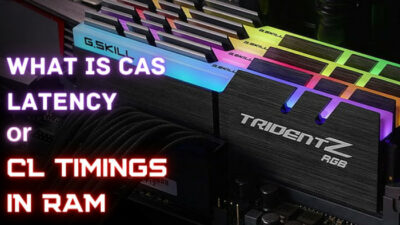Are you using a laptop and it’s getting slower due to low ram capacity? You want to upgrade ram modules but getting confused between so many choices?
Don’t worry. You are reading the exact guideline you need in this time.
During the upgrade process of my laptop ram, which I’ve done recently, I researched and gathered the knowledge you need to know before upgrading your ram module.
So, What ram is compatible with my laptop?
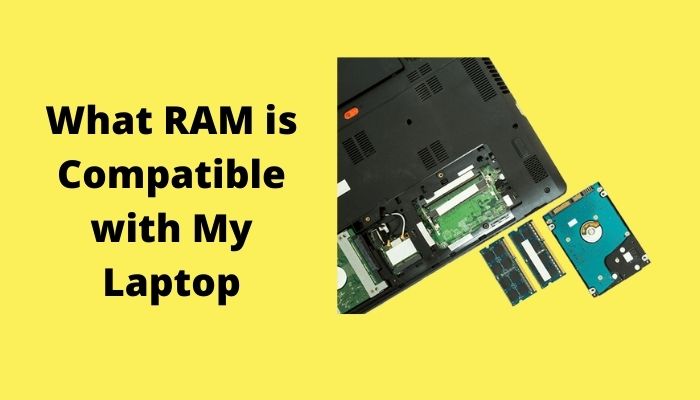
What is laptop ram and why do I need more?
Ram stands for random access memory. You can also call it physical memory. It is used for storing information temporarily that contains running processes and tasks. Mainly, processing information among your computer components is it’s primary goal.
Ram works fully functional when it gets enough space. To get the job done you have to free up its space more often. But, in modern days computer, you can’t get enough of it as the software gets heavier and workload on ram gets bigger.
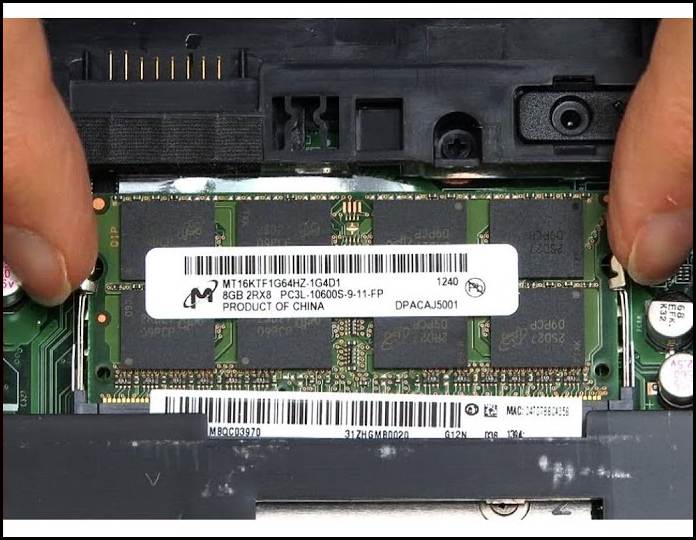
When your laptop processes tons of data or you play heavy games it takes time to process data and your laptop starts to freeze.
If that occurs frequently, then you realize you have to upgrade your ram. Increasing your access memory will boost up the performance of your laptop.
Remember, a motherboard won’t turn on without RAM, and the CPU also needs RAM to turn on.
How much ram do I need?
To determine how much extra ram your computer needs, you need to be sure what kind of ram your computer uses.
To understand this process you have to follow some steps that I’m going to show you.
Here are the steps to know how much ram you’re using:
- Open task manager: If you are using Windows as an operating system click on the windows button and write task manager in the search box. Or you can right-click on the side menu bar and there you can select task manager from the list.
- Open performance monitor: After opening task manager you can see there’s a tab named ‘performance’ on the second row of the task manager.
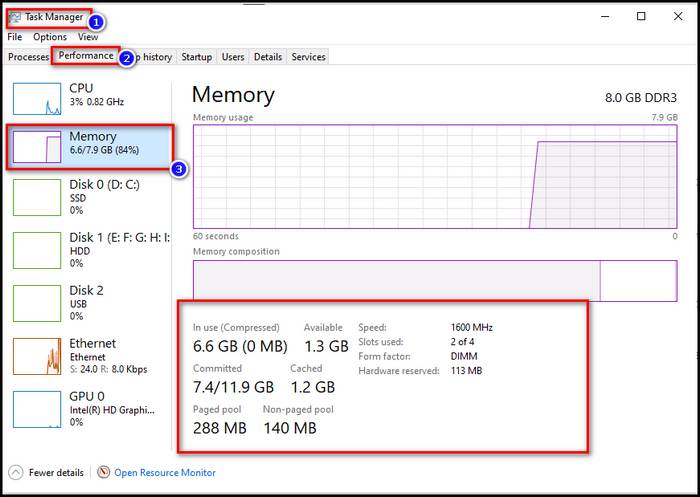
- Select memory: You’ll see a list of options. From them, you have to click on the memory tab.
- See thoroughly: On the top right corner of this window, you’ll be able to notice how much ram you have on your laptop right now. On the bottom right you’ll notice the bus speed, slots you are using, and form factor (SODIMM).
Note: On the slot used row you might see you’re using 2 out of 2 slots available. Don’t get upset. You are using only one ram slot other one is called ‘embedded ram’ as in built-in memory of your laptop’s motherboard. Check out which RAM slot to use for a better understanding.
So, now you know how much and what kind of ram you’re using. From the next step, you can learn how much extra ram you need.
Here’s the process of doing that:
- Open performance monitor: Go to the windows search button and type ‘performance monitor’. Click on the first result showing up.
- Monitor it thoroughly: When the tab appears, expand ‘monitoring tools’. Underneath it, you’ll find ‘performance monitor’ click on the Green + sign to add another variable. Press ‘ok’ to confirm it.
From this window, you’ll get an idea of how much ram you need to add extra. Aim for higher if you want an extra smooth experience.
Ram compatibility checklist
After reading previous paragraphs, now you have a proper idea of your desired ram module. Now, it’s time to check if your laptop can handle it or not.
You don’t have to do that on your own. We have tested some methods and arranged them properly for your benefit.
Here’s what you need to check.
- Check motherboard compatibility: The motherboard of your laptop needs to support the type of ram you are willing to acquire. Check how many slots are available so that you can install a new ram. This process also makes sure if you’ll be able to upgrade ram further.
- Select the ram version: There are several types of ram available for laptops. This depends on which generation ram are you using. For instance,
- DDR4: Double-data rate fourth-generation random access memory.
- DDR3: Double-data rate three synchronous random access memory.
- DDR2: Double-data rate synchronous dynamic random access memory.
Make sure you know which type of ram from above your laptop’s motherboard support. There’s another type of ram module available. That’s the fifth-generation ram stick, DDR5. But, that’s the latest model available in the market. So, that doesn’t need to upgrade.
- Check ram frequency: We know, processor power can be determined by gigahertz (Ghz). There is also a metric available to check RAM frequency. If you have two sticks ram with different bus speed, one of them will not be able to provide it’s full power.
Suppose, your primary ram contains 1333 megahertz (Mhz) bus speed. And you bought a 1600 Mhz ram. In order to perform smoothly, your laptop will choose the first one as ideal. Though your second module consists of more power, it won’t be able to perform its full potential.
So checking ram frequency is a must.
- Check operating system: The operating system you are running on your laptop might not allow you a jump of using memory module. Suppose you’re using a 32-bit windows operating system. That will lessen the acceptance of the memory amount. Usually, 64-bit based operating systems allow you a sufficient amount of ram.
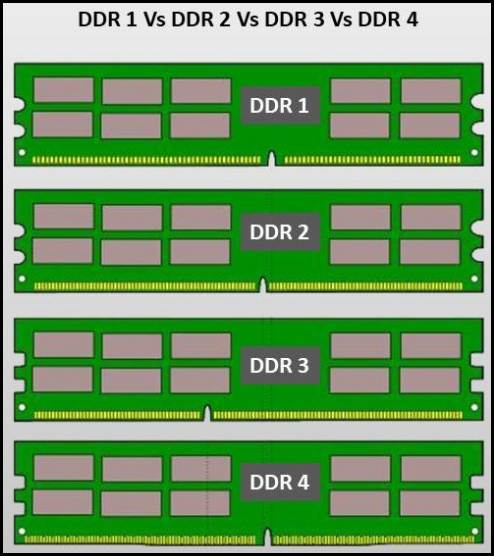
Confused? Don’t worry. For your help, I’m going to provide you with a list of operating systems and how much ram they allow you to install.
Here’s the limit for 64-bit Windows versions:
Windows 10:
Windows 10 home: 128 GB
Windows 10 pro: 2 TB
Windows 10 enterprise: 6 TB
Windows 8 and 8.1 :
Windows 8: 128 GB
Widows 8 Pro:512 GB
Windows 8.1: 128 GB
Windows 8.1 Pro: 512 GB
Windows 8.1 Enterprise: 512 GB
- Check DIMM slot: Check which DIMM slot you are currently having. You can use CPU-Z software for checking it. You can see your laptop specification with this software. make sure you have an extra slot on your motherboard and check if it works properly. You should also make sure if your laptop can handle a higher volume of ram per DIMM. Some laptops have memory limitations.
So, now you have a brief knowledge about if your chosen ram is compatible with your system or not. Make sure you have double-checked everything before buying a new ram.
While choosing the best RAM for your device, ensure to pick a RAM with low CAS latency to get high performance from the RAM stick.
Can I keep my old ram?
Sometimes, mixing ram can be harmful to your computer. That happens when you install two different types of modules on the same motherboard.
Using two different clock speed modules will make your system slow. My recommendation will be to use the same memory bus speed included ram.
But, if you want to keep the original module, make sure you buy a memory stick that includes the same Mhz and the same memory bus.
Conclusion
In this article, I have directed you on how you can select a ram on your own.
I know if you read with proper concentration and follow exactly what I explained, you will be able to select a perfect ram for your laptop.
Feel free to ask anything about upgrading your ram.



